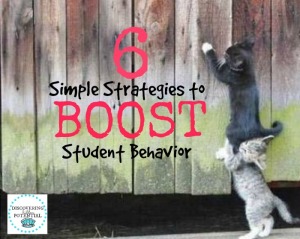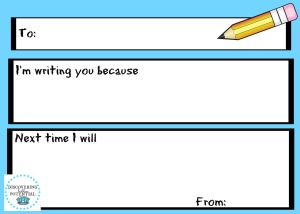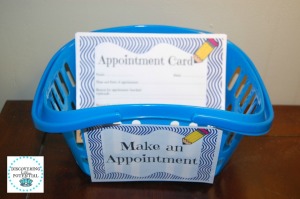Student behavior can be quite complicated but the strategies teachers use can be simple, and yet still effective. These six easy-to-implement behavior interventions are simple ways to boost your students behavior. You can never have too many strategies since you never know what unique learner will be entering your class!
1. Point to the Rule
It does not get much easier than this strategy. Most teachers have their expectations or rules visually displayed within the classroom; however, they do not refer to them or use them when correcting student behavior. When a student is not following a classroom expectation, simply point to the rule. Constantly referring back to the classroom expectations, especially during the first few months of school, gives students gentle reminders. Refer to the rule number instead of the actual rule, such as "You are not following rule number 3, please stop". This way it is very clear and the teacher and student typically become less likely to become entangled in a power struggle.
2. Self Addressed Discipline
Self Addressed Discipline is a good strategy to use when you have parents who are equally responsive to their child’s behavior as you. When a student continues a behavior (calling out, out of seat, etc.) after a couple of warnings, he/she is required to complete a form letter. The letter identifies the inappropriate behavior and an explanation of how the student plans to correct the behavior in the future.
The completed form is then put into an envelope with the parents name. The student is informed that the letter will be placed in a file unless the student exhibits the inappropriate behavior again within a designated time frame (that day, that class period, etc.). If the behavior occurs again then the letter is sent home or it could be scanned and emailed to the parents. Parents should understand the meaning of this form. The power behind this strategy is that the student knows the letter is sitting and ready to be sent home and the teacher is not making an idle threat such as “I’m going to call your parents”. Some children can regain control of their behavior once the letter is ready to be sent home.
3. Appointment Cards
Many inappropriate behaviors occur because the student is trying to get attention or avoid a task. Appointment Cards help give students the attention they want but at a more appropriate time that is designated by you. As the teacher you need to give them the message that they are not in control of your classroom and that there is a more appropriate time to address the issue. If you do not want to stop instruction, then you can use appointment cards to formalize the process. Let students know that you want to talk about the issue, but not at that moment and they can make an appointment to talk with you at a designated time. You can also use the appointment cards when YOU want to make an appointment with a student to discuss their behavior. This can be especially helpful for students who are on an individual behavior point system. Assign a point value for completing the card and they will be reinforced for completing the appointment card instead of continuing the disruptive behavior. It is important to continue to give students different strategies that they can use and when students use one of these strategies, you should reward or reinforce that choice.
4. Transition Tickets
If you have trouble transitioning your class from one activity to another, this strategy will be invaluable. Prior to the transition time (lunch to recess, between subjects, end of the day), assign 2 to 3 behaviors that you will be looking for as you walk around the class or walk down the hall. As the class begins the transition, begin handing out "transition tickets" which could simply be raffle tickets to students who are following the behavior expectations. The tickets can then be collected at the end of the week for an actual raffle. After consistently implementing this over the course of the week, a class can usually successfully transition in less than a minute.
5. Timer Surprise
This strategy is another attempt to utilize the rules and expectations already posted in the class. First, students should be very aware of the rules and know exactly the behaviors that are needed. The teacher then uses a standard egg timer and arbitrarily sets the timer, so no one knows when it will go off (you can also use the timer on the Promethean board if you have one.) When the timer goes off, the teacher looks around the room to see if the students are following the class rules. All rules can be used or only one rule may be designated for each interval. If the class is following the rule, then some type of reinforcement is given, such as a check, link in class chain, or other class-wide reinforcement system. The teacher then resets the timer without looking at the amount of time and follows the same procedure. This procedure takes very little time and is effective because it is intermittent and random. This strategy can be used with an individual student, as well as with an entire classroom.
6. Mystery Hero Student
This strategy is helpful when a couple students are creating most of the behavior problems within the classroom. The teacher explains that there is a student’s name written down and kept in the mystery hero student envelope. Throughout the day, the teacher will be watching this student to see if they are following the classroom expectations or some other set criterion (ex: staying in seat, raising hand, keeping hands to self).
If the mystery student meets the set criterion or expectations, then the whole class receives a reward and the name of the student will be revealed. The rewards do not need to be big or even tangible. I plan on having a future post about reward menus that will give lots of ideas! If the criterion is not met then the name of the student is not revealed (you do not want to embarrass the student) and another chance is given the next day.
Another option could be putting all the student names on popsicle sticks and place them in a jar. At the end of the day, the teacher would pull out one stick. If the student whose name was drawn has followed all the expectations throughout the day, then the student will get his/her name put on the “Mystery Hero” wall and be given a mystery hero certificate.
Add these strategies to your behavior "toolkit" and give your students a behavior boost at the beginning of the school year!
Click below for FREEBIES of Self-Addressed Discipline and Appointment Cards.

Laura has worked as a School Psychologist for the past 10 years and is currently a Special Education Coordinator in South Carolina. She is married with two sweet daughters and loves sailing, running, and spending time with her family. Check out her blog for more behavior resources and classroom management techniques, as well as early learning resources she has created for her own children.






No comments:
Post a Comment